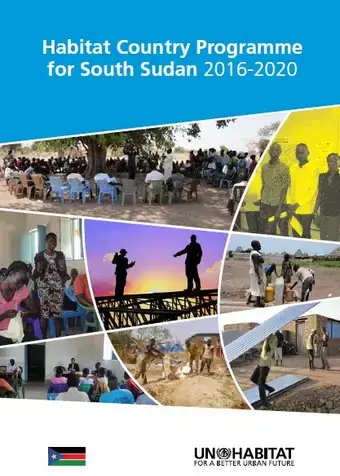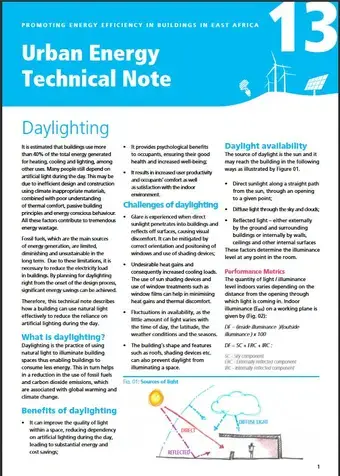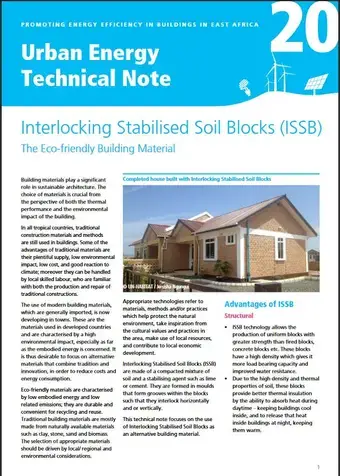Overview
South Sudan has a population of 11.3 million according to the World Bank (2013). 50.6% of the population lives below the poverty line, with the poorest concentrated in rural areas. In urban areas, the figure is 24.4 percent (World Bank, 2011a).
South Sudan’s predominantly rural population has gradually been shifting to urban areas. Between 1972 and 2016 the proportion of the population living in urban areas increased from 8.6% to 18.8%. The magnitude of urban growth poses many challenges, exacerbated by dilapidated/destroyed infrastructure and services resulting from decades of war and marginalization. Infrastructure development and provision of amenities necessary to support the livelihoods of the population, have not been commensurate with the rise in the urban population. The country’s rapid urbanization, particularly its capital, Juba, calls for large scale urban planning and institutional capacity building of government institutions to be able to effectively plan and implement sustainable urban development initiatives in the country.
As the UN Agency mandated to promote sustainable urbanization, it is imperative that there be increased engagement between UN-Habitat and the government. The urban sector is a key driver of economic growth in South Sudan, due to its high potential to stimulate development and employment in secondary and tertiary sectors. It is also linked to the stimulation of other sectors such as infrastructure development, information and communication, tourism, and hospitality and financial services.
Re-settlement, reintegration of IDPs and returnees, and building their resilience: The anticipated outcome is IDPs, returnees and the host communities living peacefully together and accessing basic services. This is in line with priority area (III) of the United Nations Country Framework (UNCF) for South Sudan, i.e. Strengthening Social Services.
Land mediation, land governance and land administration: The anticipated outcome is to have land mediation and secure land tenure supporting peaceful co-existence and development in line with priority area (I) of the UNCF for South Sudan; Building Peace and Strengthening Governance.
National urban policy and physical planning for equitable development: This is to result in planned and sustainable urbanization to transform the lives of people in South Sudan; This is also in line with priority area (I) of the UNCF.
Housing and basic services through public works: The anticipated outcome is that basic services are meeting the needs of urban communities, and secondly that livelihoods are enhanced through employment in public works projects; in line with priority area (III) of the UNCF.
Livelihoods, local economic development, and youth empowerment: This component aims to result in the creation of conditions for sustainable livelihoods and urban economic development with a focus on improving the status of women and youth, in line with priority areas (II) and (IV) of the UNCF. (II) Improving Food Security and Recovering Local Economies, (IV) Empowering Women and Youth
- Displacement of people and collapse of infrastructure and basic services caused by recent armed conflict.
- Inadequate policies, legal and institutional frameworks for land mediation, governance and administration.
- Lack of proper data and indicators on the state of cities as well as a sustainable urban development plan.
- Housing and basic services shortage in major cities.
- Lack of enabling conditions for sustainable livelihoods and urban economic development.
Urban Population (2018): 19.6%
Urban Growth Rate (2015-2020): 4.10%
Donors
Partners
Highlighted Publications
Legacy content
- Total value of UN-Habitat investments (2008-2013): US$ 6,539,531
- Total number of UN-Habitat projects (2008-2013): 5 projects
- Donors: UNDP, Canada (DFAIT/START), UNHCR Sudan, Japan, UN Mission in Sudan (UNMIS), UN-Habitat Emergency Response Fund
- Implementing Partners: UNHCR Sudan
General information
Capital: Juba
Major cities: Malakal, Wau, Pajok, Yei, Yambio, Aweil, Gogrial, Rumbek, Bor
- Population: 10.84 Million
- GDP: US$10.22 Billion
- GDP growth: -47.6%
- Urban population (annual %): 18%
- Population growth rate (average annual %): 4.3%
Source: World Bank 2012
UN-Habitat projects in South Sudan
• Capacity Building for Land and Conflict Management in Southern Sudan To contribute to the more effective management of land-related disputes and conflicts in South Sudan. The programme will focus on critical interventions that will strengthen the capacity of key institutions to mitigate the risks of land-related disputes leading to conflict and to enable them to more effectively manage land disputes.
• Housing and Livelihood Support for Returnees in South Sudan Participatory settlement planning is applied in selected areas of the 3 targeted States where returnees will be settled, in support of their reintegration and of a slum upgrading/prevention effort. Basic housing units and urban services are provided, targeting the most vulnerable returnees in urban expansion areas. Trainings to returnees are delivered in low-cost and environmental-friendly SSB construction technology and they are engaged on construction activities to support their sustainable livelihoods.
• Quick Impact Project: Urban Water and Sanitation Project (UNMISS)
• Support to Sustainable reintegration of returnees in South Sudan To address immediate housing needs of displaced families after the revolution in Libya and assisting the ministry of housing with a short and medium term housing policy and technical support.
Images








